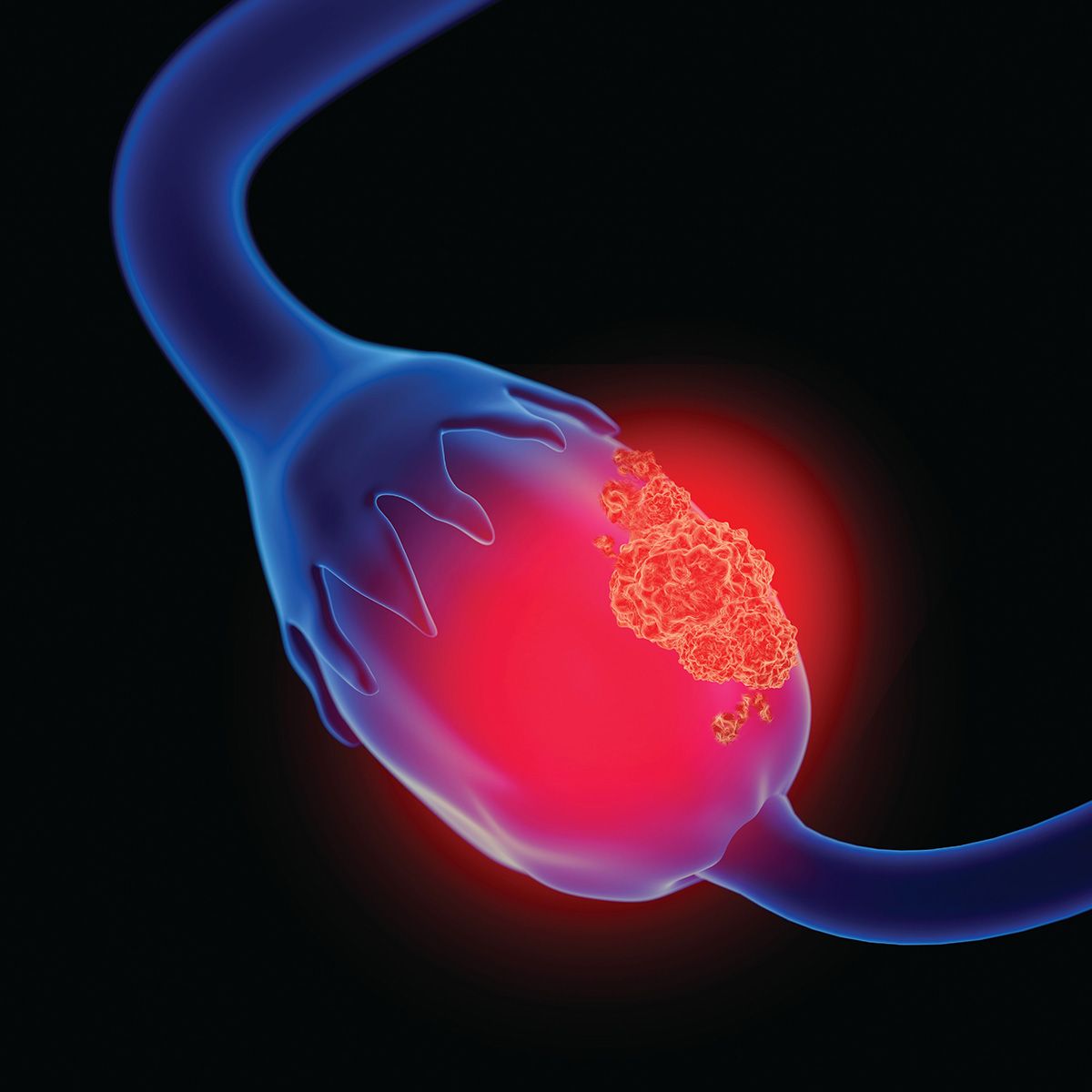Article
Rubraca Staves Off Disease Progression Better Than Chemotherapy in BRCA-Mutant Relapsed Ovarian Cancer, Research Shows
Author(s):
Rubraca improved progression-free survival in patients with BRCA1/2-mutant, platinum-sensitive, relapsed ovarian cancer, according to findings from the ARIEL4 clinical trial.
Patients with relapsed ovarian cancer that harbors a deleterious BRCA1/2 mutation and is sensitive to platinum-based therapy lived longer without their disease progressing (an outcome referred to as progression-free survival) when treated with Rubraca (rucaparib) compared to chemotherapy, according to updated findings from the phase 3 ARIEL4 clinical trial.
Of note, overall survival — time from treatment until death of any cause — was similar between the two treatment groups.
Findings, which were presented at the 2022 European Society for Medical Oncology Congress, showed that median overall survival favored the chemotherapy group with medians of 19.4 months in the Rubraca group, compared with 25.4 months in the chemotherapy group.
The researchers noted that the difference in overall survival was driven by the subgroup of patients with platinum-resistant disease (cancer that comes back within six months of being treated with a platinum-based chemotherapy agent), with medians of 14.2 months and 22.2 months with Rubraca and chemotherapy, respectively.
In the patients with platinum-sensitive ovarian cancer — meaning that their disease responds to platinum-based therapy — the median overall survival was 29.4 months with Rubraca and 27.6 months with chemotherapy.
“The overall survival (results were) confounded by the high rate of crossover from chemotherapy to (Rubraca) which was built in (to the trial and resulted in) 90% of patients receiving (Rubraca),” Dr. Amit Oza, head of the Division of Medical Oncology & Hematology and medical director of the Cancer Clinical Research Unit at Princess Margaret (PM) Cancer Centre in Toronto, Canada, as well as co-leader of the Ovarian Cancer Translational Research Initiative, said during a presentation of the results. “Additionally, 42% of patients in the (Rubraca treatment group) did not receive subsequent anticancer treatment, and we need to understand this pattern.”
In March 2021, preliminary findings from the ARIEL4 trial showed that Rubraca may prolong progression-free survival versus chemotherapy.
Then, The initial read-out of the trial that was published in Lancet Oncology earlier this year showed that median progression-free survival was significantly improved with Rubraca compared with chemotherapy in the efficacy population, or those harboring deleterious BRCA1/2 mutations without reversion mutations, at 7.4 months versus 5.7 months, respectively. Similar progression-free survival effect was noted in the overall study population (7.4 versus 5.7 months).
Patients were eligible for the trial if they had high-grade relapsed epithelial ovarian, fallopian tube or primary peritoneal cancer; two or more prior chemotherapy regimens, one of which had to be platinum based; a deleterious germline or somatic BRCA1/2 mutation; and no prior experience with either a PARP inhibitor or single-agent paclitaxel.
Notably, 313 of 349 patients treated on the trial received Rubraca at some point, either at first randomization or at crossover (patients were allowed to cross from the chemotherapy group to the Rubraca group if their disease progressed), which may have affected the overall survival results. In total, 80 patients (69%) in the chemotherapy group did crossover to receive Rubraca.
At the data cutoff of April 10, 2022, 6% of patients in the Rubraca group and zero in the chemotherapy group had ongoing treatment with the assigned study regimen.
Average duration on treatment tended to be longer for those given Rubraca compared to those given chemotherapy across those with platinum resistance (5.6 months versus 4.4 months), partial platinum sensitivity (7.6 months versus 4.5 months) and full platinum sensitivity (13.7 months versus 3.4 months).
A Difference in Subsequent Treatment
Subsequent anticancer treatment of any kind was more common in the chemotherapy group compared to Rubraca group in those with platinum resistance (76.3% versus 57.5%, respectively), partial platinum sensitivity (83.9% versus 61.5%) and full platinum sensitivity (84.6% versus 54.2%).
“A significant proportion of patients who were in the (Rubraca) group did not receive subsequent anticancer treatment (and those who) received crossover (Rubraca) largely stayed on treatment for more than six months,” Oza said.
An adjusted analysis that excluded patients who crossed over from chemotherapy to Rubraca showed favorable median overall survival in the Rubraca group at 19.4 months, compared to 9.1 with the chemotherapy group. When data were censored at crossover, overall survival outcomes were similar between groups. Overall survival with time-varying covariate adjustment showed no difference between treatment groups.
Looking at results for time to second progression, Rubraca and chemotherapy resulted in similar outcomes in those with platinum resistance and full platinum sensitivity; outcomes showed slight favorability in those with partial platinum sensitivity who were treated with Rubraca.
“We also tried to look at the impact of post-randomization treatment,” Oza said. “In the patients randomized to (Rubraca) or chemotherapy with platinum-resistant disease, there was no difference (in progression-free survival); whereas with subsequent treatment, there was a significant advantage to patients treated with (Rubraca) compared with subsequent chemotherapy.”
Better Progression-Free Survival Outcomes
He continued by pointing out that those with both partially and fully platinum-sensitive disease had better progression-free survival outcomes with initial Rubraca, and those who initially received chemotherapy had better time to second progression when they crossed over to receive the PARP inhibitor.
There were no new safety signals noted. Side effects of special interest included the occurrence of myelodysplastic syndrome (MDS) or acute myeloid leukemia (AML) — types of blood cancers — that was reported in seven patients (3%) initially randomized to Rubraca, compared with zero treated with chemotherapy.
The investigators concluded their research by raising unanswered questions about the optimal sequencing of PARP inhibitors in advanced stage disease.
“Further work is also ongoing to understand the biologic basis of resistance and the optimal sequence of treatment in patients,” concluded Oza.
For more news on cancer updates, research and education, don’t forget to subscribe to CURE®’s newsletters here.




